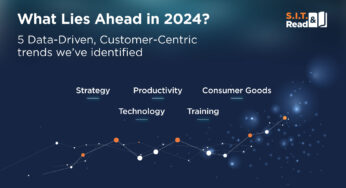Innovate to Motivate
Think about the last time you bought something and ask yourself a simple question: why did I buy it? Well, the answer most certainly is that you felt you needed it. Something motivated you to shop for that item, buy it, and use it. Consumers only buy things when they’re motivated.
Understanding consumer behavior starts with understanding motivation. If you know what drives people to buy products and services, you can make sure your products and services have the right features and benefits people want. But it’s more than that. If you also understand how that motivation to buy develops inside a person, you can communicate more effectively what your products and services do. You’ll understand when people are most likely to buy, and that helps you market to them more effectively.
First, let’s look at some definitions. You need to understand the difference between needs and wants. Needs are a perceived lack of something. Needs are the basis of all motivation. When you sense you’re missing something, you become motivated. If you become motivated enough, then you want it. Wants are the specific satisfiers to fill that gap. In other words, when consumers sense a gap in something, they first ask themselves, “Do I need this?”. If so, they move from needing it to wanting it. They are motivated!
So how do you motivate a consumer? You have to show consumers how your products and services connect to the things consumers want. For that, you use a tool called Feature Benefit Laddering. Think of Feature Benefit Laddering as unpacking your product or service by starting with its primary features and how they connect to the benefits they generate and how those benefits ladder up to the values people want.
Here’s an example. Imagine we’re selling drill bits. How do we motivate consumers to buy drill bits? Here’s my Feature Benefit Ladder. Think of the steps of a ladder. At the bottom rung is your product. Right above that are its main features, sharp spiraling edges, length, material, and so on. Then, above each feature is the primary benefit it delivers. In the case of a drill bit, that is simply a hole. Keep going, and you see that you can do a lot of things with a hole, including hanging a picture, and so on.
To motivate consumers, we start by showing how their homes would be more comfortable if they just had memorable pictures on their walls, pictures like family vacations and so one. That makes them realize they’re missing something. Then, we have to show them how drilling a hole lets them hang that picture. That activates them to want a drill bit to fill that need. And finally, we direct that want to our specific model of drill bit and show how ours does it better than the competitors.
Great innovators motivate by activating needs and directing wants. You create a feature benefit ladder starting from the bottom up. But then you motivate consumers starting at the top and working down.
Recent Posts
Innovation Behavior
Innovation is a skill, not a gift. Top organizations drive growth by nurturing and investing…
Should you learn TRIZ? – Yes. ….and No.
Are you in the world of problem solving? Is problem solving a skillset you have…
What Lies Ahead in 2024?
5 Data-Driven, Customer-Centric trends we’ve identified This is not just another conventional forecast. Over nearly…
Fork or Chopsticks – Which Innovation Tools Do You Use?
Imagine a chef, who only uses a spoon. Imagine a dentist, who only uses a…
The Moat Mentality: Exploring New Frontiers in Innovation Methodologies
In investing and business strategy, we often speak in terms of moats. Warren Edward Buffett…
Was it a Breakthrough or an Adjacency?
This year, P&G’s Febreze celebrates its silver anniversary as a brand. But not all 25…






View Comments
Your article helped me a lot, is there any more related content? Thanks!